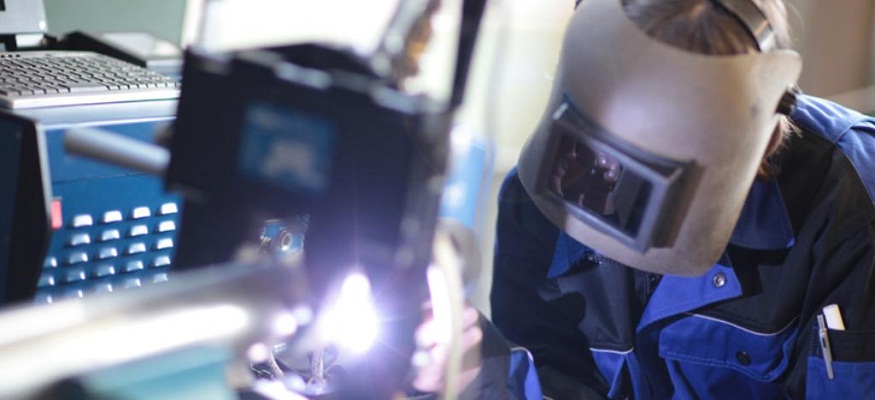In terms of the fine and exquisite processes of welding services where the combination of metals provides the foundation for these industries including construction and manufacturing, the meaning of the meticulous planning and execution of the service can not be overstated. The welding procedure at the core of every weld’s success is refined and defined in the Welding Procedure Specification, which is guided by the Welding Procedure Specification (WPS). In this, one of the crucial parts, we focus on welding procedures and WPS which guarantee getting the maximum standards of quality, safety, and reliability of welding services.

Understanding welding services
Workmanship related to welding includes a multibody of approaches which are referred to as joining metals to make stronger and reliable weldments. The true utility of welding is not simply limited to constructing structures but goes much beyond this it is not only used in the construction industry but it is much more than that. One of the most significant advantages of welding is that it allows transitions between metals to be completely smooth; skyscrapers and cars are being built right now, which would never be possible without this technique that supports modern infrastructure.
The essence of welding procedures
At the core of the high repair and reliability of the welding services are welding procedures. The welding procedure is a complex set of guidelines where it describes how the work is to be done. It contains the steps, parameters and quality assurance measures required to achieve perfect results. Whether it is choosing the right arc welding process, preparing the materials or calibrating the process parameters, the welding process requires attentiveness to details and the procedure spells out each one of these.
Identifying WPS contents
To the core of the method, of welding procedures is the Welding Procedure Specification (WPS), a document that is finalized and serves as a cornerstone of welding quality assurance. The WPS manual serves as a manualized guideline for creating and executing welding procedures and therefore, it guarantees the same level of uniformity, consistency, and compliance with the industry standards. Key components of the WPS include
Welding process and technique
The WPS requires welding option to be used for the welding process and technique. The proper welding method is dependent on the materials used, joint design and project limits.
Base metal and filler material
The discussed section on WPS defines the kinds and grades of base metals and filler materials that are to be merged during welding. Essential for the compatibility, strength, and weld integrity, choosing the suitable materials for the welding is undoubtedly crucial.
Welding parameters
Voltage, amperage, path speed, and shielding gas flow rate, all mentioned in the WPS, are employed to provide a nice weld penetration, homogeneity, and mechanical properties. These parameters are especially well thought-out as they have been validated through several welding procedure qualification tests and are adopted using best practices.
Joint design and preparation
In this regard, the WPS covers the joint design and preparation processes, which include the android tips joint geometry fitting accuracy, surface preparation processes, and so on. Successful welding of the joint requires a proper joining profile and cleaning of the joint. The seams would be well-matched and strong if both the design and the joint preparation were done properly.
Quality assurance measures
The quality assurance regimes of WPS include pre-weld inspecting, in-process monitoring, and post-weld testing to ascertain complete conformity of the weld to the declared conditions and facilities. Methods are used at different stages of the welding progress, including ultrasonic testing, radiographic testing, and visual inspection to guarantee the integrity of the weld.
The significance of welding procedures
Consistency and reproducibility
The development of a WPS Standard enables welding services to establish uniform standards of welding and achieve the values of hard repetition that meets any welder or task. Through this, we make sure that pates are uniform which in return will make all welds to be of the same quality level and productivity without error.
Compliance and certification
Welding Procedure specifications are created by looking into existing codes, standards, and regulations of the industry and this regulatory guideline will be considered in all necessary protocols and procedures.
Risk mitigation
Following consistent WPS decreases the chances of making the common output problems of the welding process, like weld defects, material failure, and safety hazard problems. Complying with known work procedural regulations, and measures of safety will make the welding service less of a menace in the incidence of accidents, rework, and lost time.
Continuous improvement
WPS acts as the ground for permanent changes in efficiency in welding processes; it is the foundation for improving manufacturing performance in welding. With constant monitoring, evaluation, and feedback, the welding procedure can be honed to skill levels and able to achieve more efficient, productive, and quality output.
Adhering to industry standards
The Regulatory Agencies will do their best to maintain the standard and uniform consistency in greenhouse gas emissions trading.
In the Welding industry, the main thing is compliance with the standards, and compliance with the standards allows us to maintain uniformity (by a single algorithm), quality, and safety. The Welding Procedure Specifications (WPS) function as a means for the verification of adherence to regulatory and non-regulatory bodies’ codes, standards, and laws. Consistency within industry standards is generated by standardizing welding procedures. This way of thinking allows the welding services to have reliable practices and favourable outcomes that inspire confidence in customers and facilitate the overlap of these parameters into other industries.
Harnessing technology
Following technology evolution, welding services begin introducing innovations of techniques to improve the quality and yield of weldings and WPS. Automation, robotics, and computer digitalization drive radical changes in the methods of welding design, execution, and control, to achieve the highest standards of accuracy as well as productivity and quality, all over the world. Artificial intelligence in welding facilitates the creation of complex 3D models in real time, predicts defects, and improves the overall workflow by applying AI-driven tools such as welding software or simulation tools. Through the use of the most advanced technologies, welding services can keep on the verge of development, which in turn has an innate correlation with the evolvement of quality and leads to greater customer satisfaction in various sectors.
Empowering the workforce
Uncountable welding tasks always depend on the highly skilled and well-learned manforce which drives their conduct with the highest level of precision and proficiency. One of the crucial elements of training and skills development programs is that welders, technicians, and engineers get the required skills to understand, act on, and adjust their welding parameters and WPS. A learner can choose from basic welding techniques to the most specific credentials as ongoing study and continuing education are imperative to remain abreast of the industry progressions, safety codes and professional best practices. The workforce development investment by the welding services can create a culture which includes excellence, innovation, and continuous learning. It will result in a sustainable and competitive growth of services and welding technology, as the industries change in the future.
Conclusion
Today in the modern world, the powerful elements are exactly these welded connections that make the structures and systems durable and united. Beneath every strong joist, there lies a carefully put-together welding procedure which has been guided based on the principles of precision, excellence, and continuous improvement. Interpretation of Welding Procedure Specification: WPS allows the harmonisation of produced welds and achieves maximum efficiency. This maximum standard implies reaching the best welds, that prove safe and reliable.











Leave a Reply
You must be logged in to post a comment.